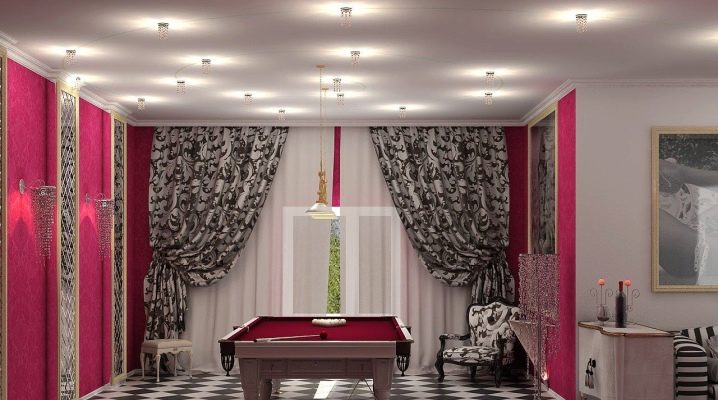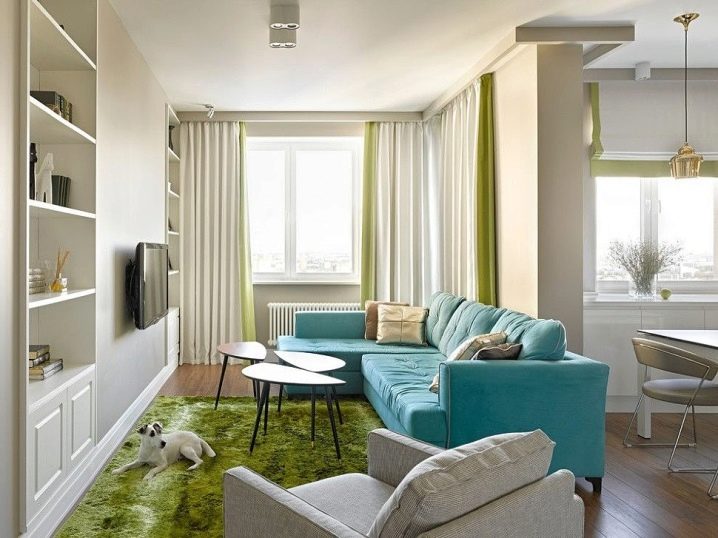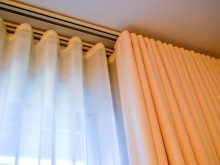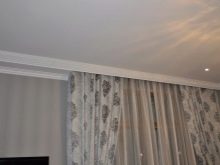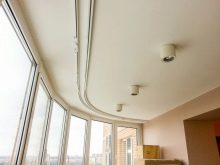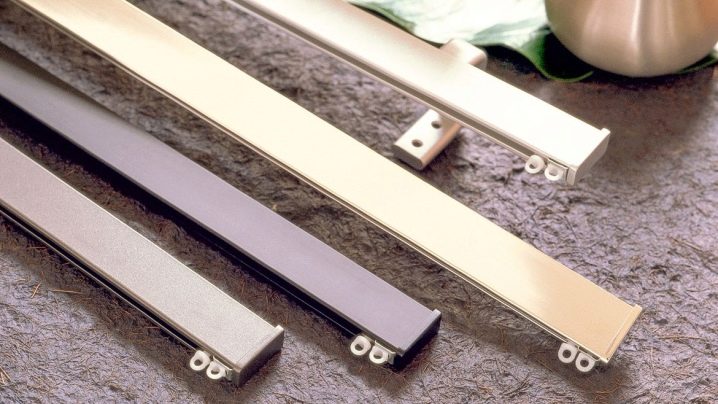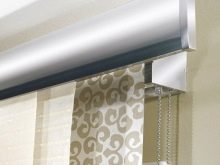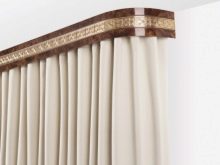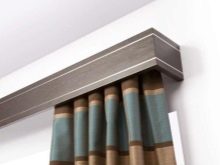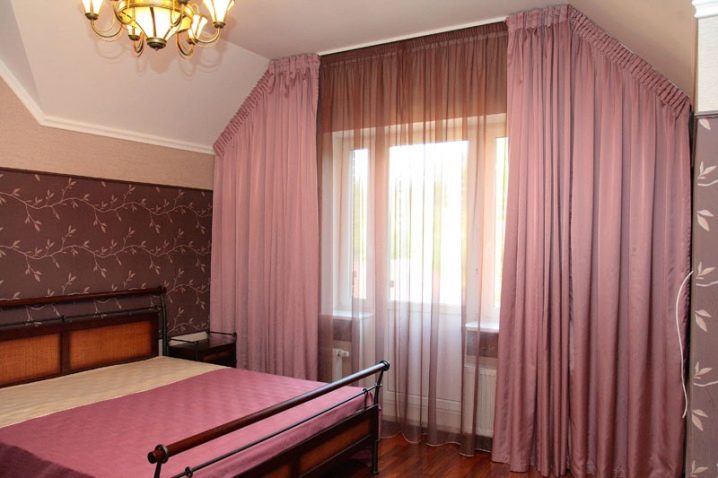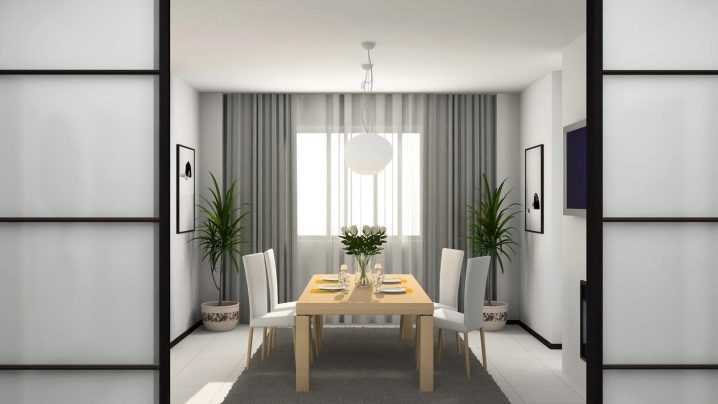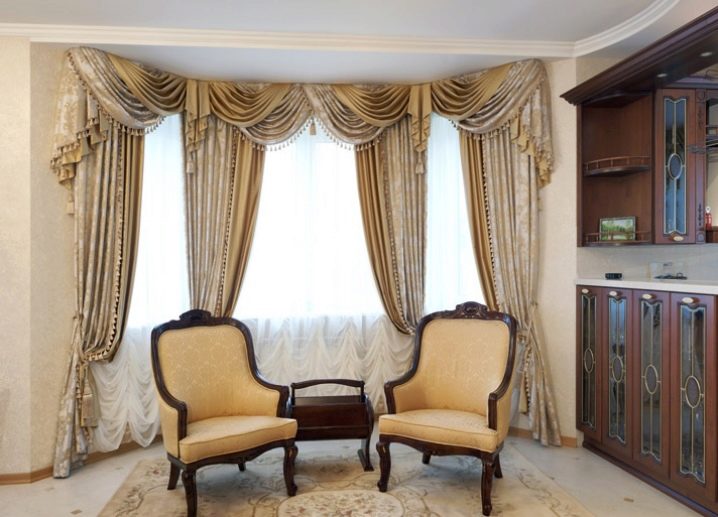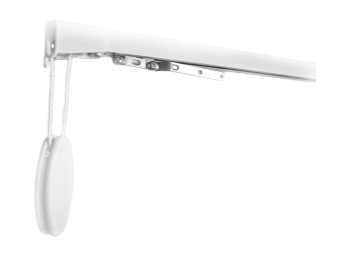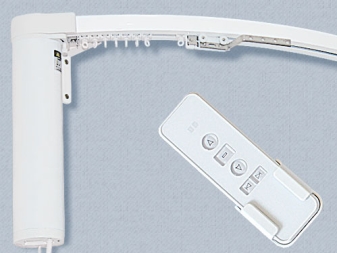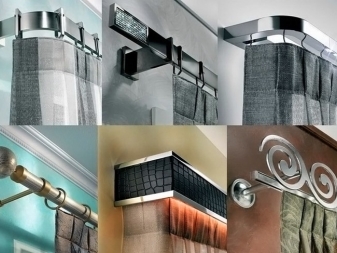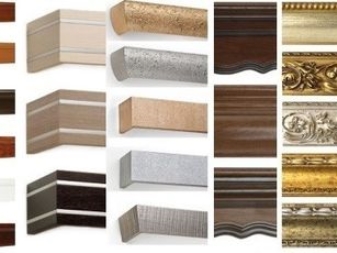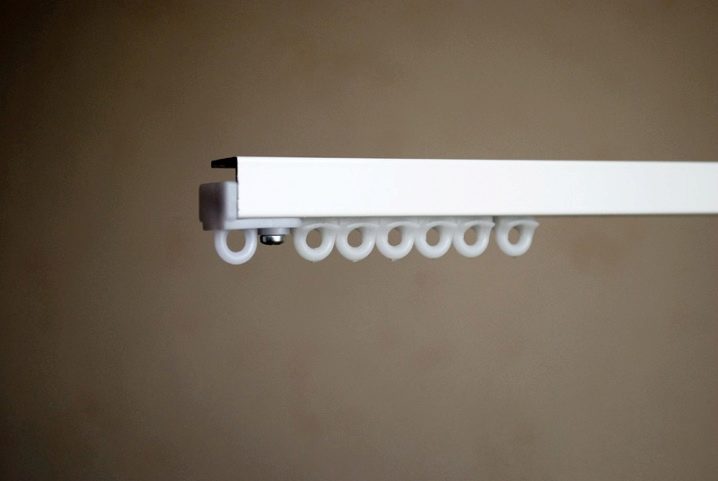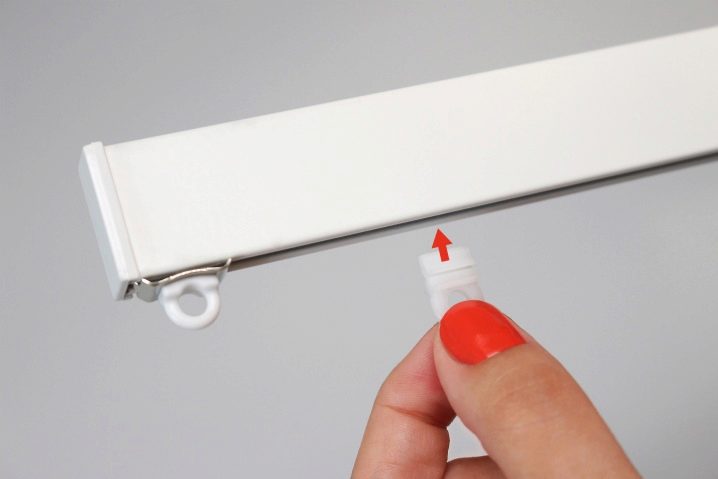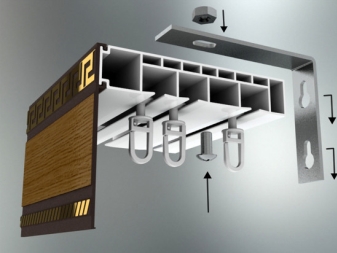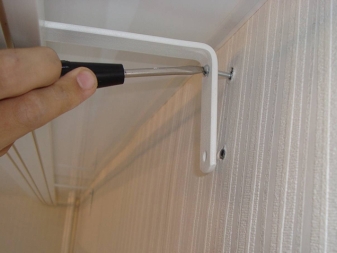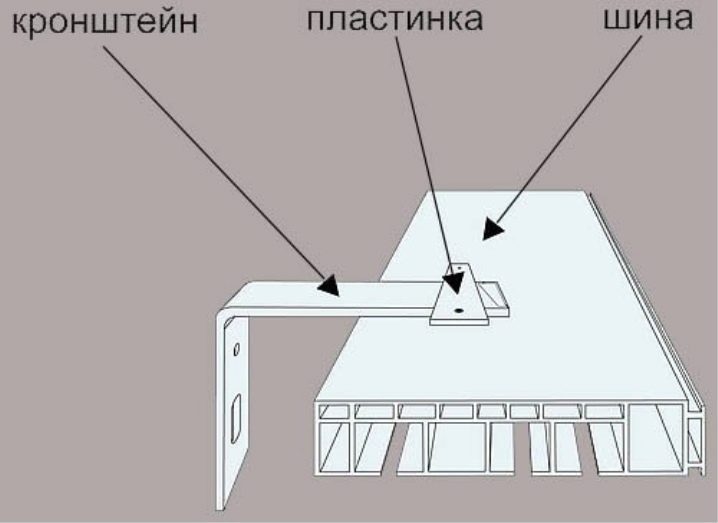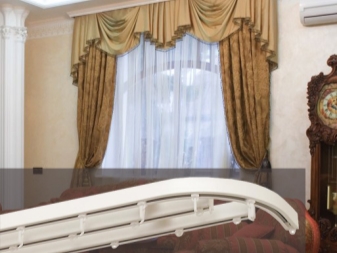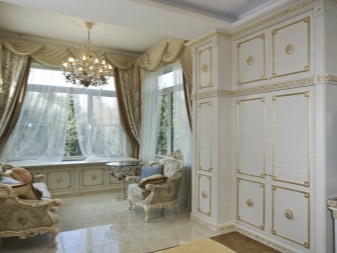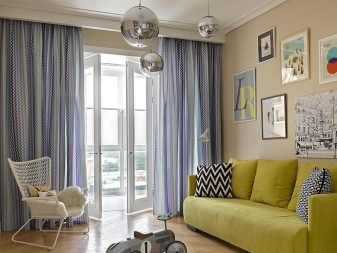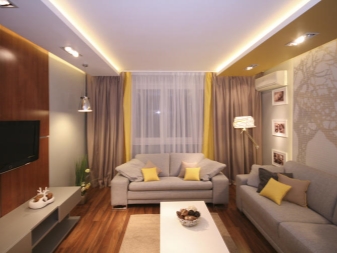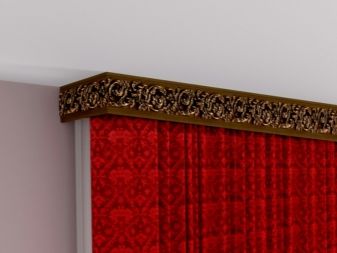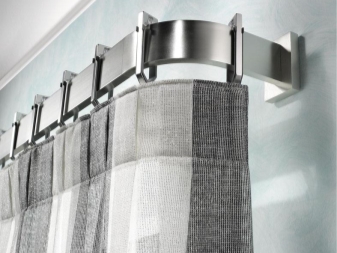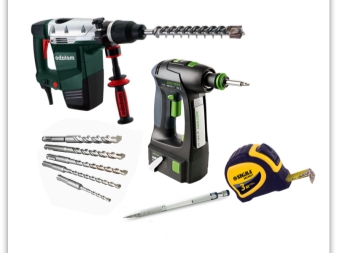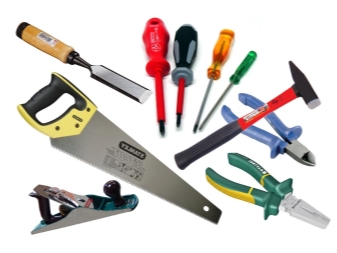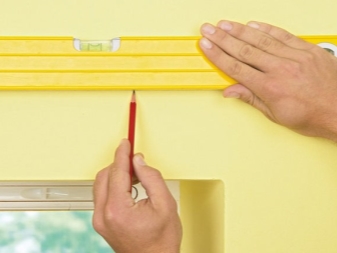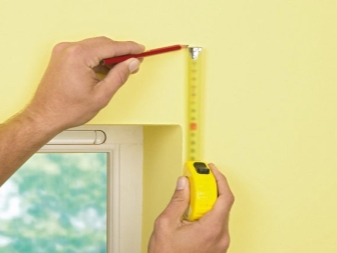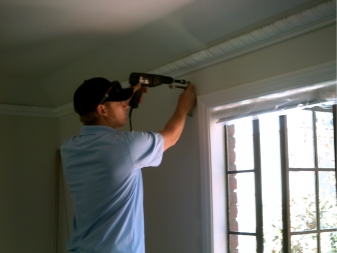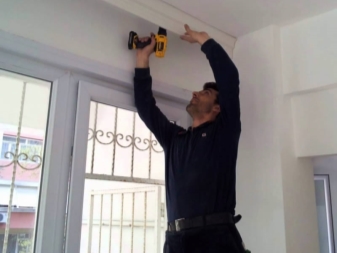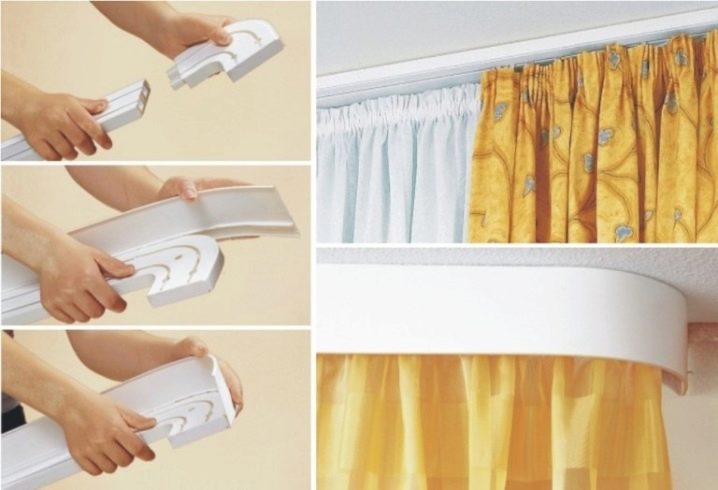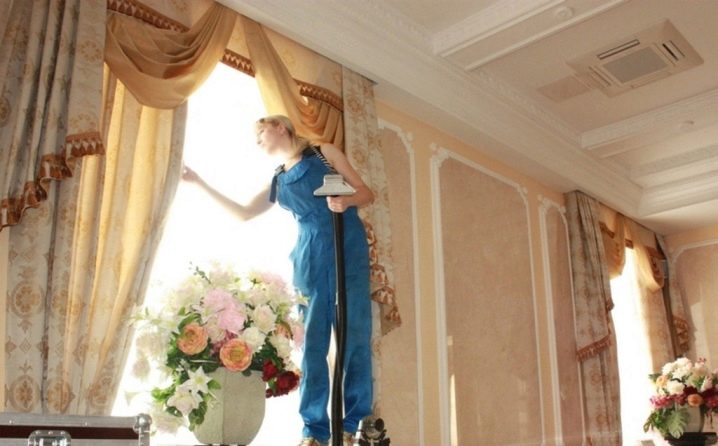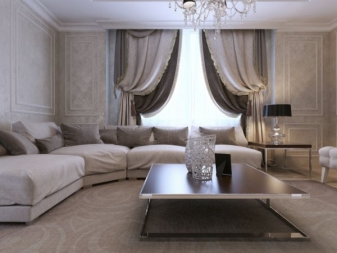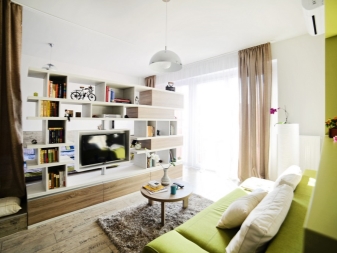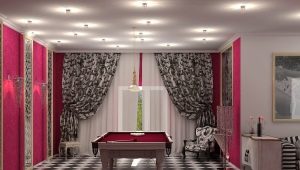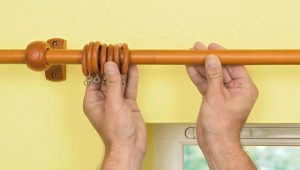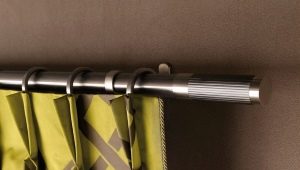Curtain profiles for curtains
For the curtains to look decent in the interior, they need high-quality fastening. In this case, the profile eaves becomes a frequent choice. The profile itself can be made of different materials and complemented by various details of the decor, ranging from adhesive decorative film and ending with rhinestones.
Features and benefits
To describe the profile cornices, the epithets are difficult to pick up. They do not carry any aesthetic load, playing only a functional role. However, with the role of fixing for curtains, they cope excellently, remaining one of the most popular options. To date, more than 70% of consumers choose the profile curtain systems.
Profile cornices can be made from a variety of materials that are not particularly sophisticated. Plastic or aluminum is the choice.Their price does not vary greatly depending on the material, but they cope with the load in different ways. Aluminum is more durable, but plastic is lighter. Therefore, for stretch ceilings often prefer to buy plastic models.
The profile structure is usually white, regardless of what it is made of. However, a wide range of decorative materials is on the market: baguettes, adhesive decorative tapes, coatings. The cheapest option is to order a profile of the desired color. Its price in this case does not change significantly, but if you wish, it will be more convenient to hide it under the lambrequin or puffs.
Duct tape imitates various materials: wood, metal, and so on. It looks quite realistic, and sometimes it is not immediately possible to guess what actually made the model of attachment for curtains.
Baguettes can also be decorated with various materials, including eco-representatives (wood, leather), bohemian variants (rhinestones), for classic interiors (carving, gilding).
Due to the fact that the profile is made of flexible materials, it is suitable for the design of various figured windows, niches, extensions,and the unpretentiousness of aluminum and plastic allows you to mount the cornice not only in the living room, but also in the street non-residential: in the bath, gazebo, on the veranda or terrace.
The advantages of such structures include their flexibility, versatility (suitable for light curtains, and for heavy curtains, ease of installation (the profile can be attached independently, regardless of the selected placement option), functionality, durability, low weight. The ability to choose the right profile for any of existing types of ceilings also makes it one of the favorites.
Unattractive appearance sometimes does not play a special role if it is planned to install the eaves in a niche or under the molding. In such cases, on the contrary, the small size of the structure allows you to hide it as efficiently as possible, without having to make a large ledge, while maintaining the height of the ceilings.
Species
First of all, the profile variants are divided according to the material from which the profile is made. Aluminum ceiling models are a favorite classic, especially when it comes to fixing heavy curtains. Plastic is inferior in its characteristics, but tire consoles can often be found on fashionable stretch ceilings.
The number of rows may vary.If single-row three-row models already surprise no one, now there are models with more than four rows. The number of guides varies only depending on the designer's fancy: there may be curtains with two lambrequins, several curtains or multi-layer tulle.
Single-row plastic options are selected for hallways, kitchens, for children. In such rooms, it is often enough to have only a tulle curtain, so it makes no sense to spend money on an aluminum model of a cornice. At the same time, a three-row cornice allows you to hang a veil, brocade and soft lambrequin with svagami or ties. This design is a permanent classic for halls, living rooms and bedrooms.
Models vary depending on the design of the sidewalls. Recently, they often make a decorative edge so that it looks more or less presentable, but there is also an alternative: a profile with face roundings. Both options are perfect for a profile that covers the entire space of the wall with a window, and for the one that draws the window opening.
There are different types of profiles depending on the mechanism of opening the curtains:
- The first and most common - hand operated, when the curtains are pulled apart manually.
- The second option is a little more difficult - it is cord management. It is made with the help of a chain, like on blinds. The systems allow symmetrically pushing the curtains in different directions or directing them only in the direction of fastening the chain.
- The third type is auto. In this case, the system is equipped with an electric drive, and the control of the position of the curtains is performed using the remote control. It can be portable or mounted in a wall.
If the cornice is purchased for decorative purposes, it is equipped with a baguette - a strap that covers the junction of curtains and cornice, as well as guide elements.
Convex wooden carved, flat with rhinestones, narrow metal strips have their fans among professional designers and ordinary buyers who have decided to make repairs.
Fittings
Depending on the quality of the components, brand and country of production, the filling of standard packages may also change, not to mention the fact that such nuances affect the price. The standard components of the profile cornice usually include the following components:
- Profile guide up to 6 m long can be straight or figured. Typically, curved models are deformed under the desired shape at the time of order, but there are also structures that should be bent only at the time of installation (for example, Japanese production). Depending on the form and materials vary. For example, aluminum can be modeled for almost any bend, but it is not suitable for fastening on fragile structures.
- Runners, employees for fixing and moving curtains are made mostly of plastic. There are two models of sliders: roller and glider gliders. The first type is used for fastening heavy curtains, the second - for light tulle. Average density curtains can withstand any of the species. There is also a third type, which is mainly equipped with a cornice with automatic or cordless control - the master glide. It helps to close the curtains as tightly as possible.
- To the runners are attached hooks with the help of which the curtains are hung. Hooks can be made, like the runners, of their plastic or metal. In terms of strength, the former are not much inferior to the latter, but often metal models are better suited for the design of curtains and the most specialized cornice.
- Feet used for fixing the curtain fabric on the eaves.They are often used with arched or trapezoidal structures to prevent the curtains from “leaving” the guides.
- Bracket (caliper) used to fasten the eaves to the surface. Depending on the severity of the curtains, universal mounts or power mounts are selected. The number of brackets varies depending on the length of the eaves and the weight of the structure along with the curtains. Usually the distance between the guides and the brackets does not exceed 5 cm, but if it is necessary to install a structure with a large indentation, it is recommended to delegate the work to professional craftsmen.
Accessories for the eaves should choose high quality regardless of the room in which you plan to mount a one-piece structure. If it collapses, it can damage not only the curtains, the ceiling or the wall, but also the environment.
How to choose?
To choose the best option from all existing ones, one should be guided not only by price. Of course, as a rule, higher-quality models and more expensive, but Russian manufacturers produce products that are not inferior in quality to samples from Italy or Japan.Check the manufacturers rating and read reviews to further form your own opinion on this issue.
You also need to decide from which material to buy the structure. For classic multilayer curtains, of course, the best choice would be a model made of aluminum, but the plastic tire looks almost unnoticed, merging with the ceiling.
Think in general about how you want to see your curtains in the end, and based on this view, decide on the number of rows. For the modest options of “curtain + curtains”, a two-row suit is suitable; for the pompous “curtains + curtains + lambrequin” - a three-row one. For the Japanese panels, a special model of aluminum is produced, so be sure to ask the sales assistant to show you the samples.
It is not necessary to focus on the aesthetic appearance of the structure, much more important is the functionality it has and how long it will last.
How to install?
Depending on where exactly it is planned to fix the profile cornice - on the wall, in the window opening, on the window frame or on the ceiling - a different set of components will be required. A huge advantage of the profile models is their lightness, so that they can be mounted to any ceiling: plasterboard, solid, tension or wood.
Those models that are designed for heavy curtains and multi-row structures, it is recommended to mount on the ceiling. Curtains standard weight can be hung on the wall cornice.
As a rule, the set of components for the eaves is already in the standard set, however, if the eaves are long enough, calculate the number of mounting brackets correctly. When mounted on a wall mounting step should be 1-2 meters depending on the severity of the curtains. For the ceiling mounting step varies from 15 to 40 cm.
You will also need the following tools:
- ladder;
- perforator;
- screwdriver;
- pencil and tape measure;
- dowels with screws;
- building level.
First, take measurements from the window. Consider that if measurements of a classic window can be carried out independently, then for a figured window (bay window, trapezoidal, etc.) it is better to entrust the measurement of measurements to professionals.
Depending on how exactly you plan to position the eaves, depends on its length. So, for installation in the entire wall should be left gaps of 10 cm on each side, therefore, the length of the cornice is equal to the width of the wall minus 20 cm.For positioning just above the window opening, it is necessary to add 20-45 cm on each side to the width of the opening on each side so that it is convenient to move the curtains. Fastening the window sash requires you to select a profile that is 1 cm narrower than the sash. To fix the profile on the frame (note that installation is possible only to a wooden frame), it is worth choosing a model 5-6 cm already of the frame.
Proceed to installing the eaves on the wall using the following instructions:
- Remove the trim from the eaves.
- Depart from the window opening 2.5 cm and mark the attachment points of the brackets at this height. Begin to markup advise from the center. Mark points with a pencil, then drill holes for fasteners. To install plastic mounts need to make two holes for the installation of metal - three.
- Insert the dowels in the holes. Follow with a screwdriver to fix the brackets with screws in the dowels.
- Install one of the tips on the eaves, then insert the sliders into the guides. Install the remaining tip.
- Suspend the eaves to the brackets.
For installation on the ceiling, in the window opening or on the frame, the mounting scheme is similar, except for the indent distance.
So, for fixing on the ceiling, the brackets are fixed at a distance, which is calculated by the formula: the protrusion of the sill / radiator plus 5-6 cm (correction for curtain assembly). When choosing an attachment to the frame or to the window casement, they are oriented towards the center of the frame or the upper edge of the window casement.
How to care?
Care for profiled cornices is extremely easy. The main thing is to remember that wet cleaning is contraindicated in these structures. Being under the ceiling, the cornice cannot physically get dirty much (except in unique cases), so it is enough to wipe it from time to time with a dry cloth from dust.
Vacuuming is also possible. If you walk along the rail with a furniture brush, you will effectively get rid of the dusty layer.
If the dirt is huddled in the corners of the structure, you can carefully remove the tips, wipe the eaves and install the tips back. Also, if possible, “blow through” particularly polluted corners with a vacuum cleaner.
It should be noted that it is not necessary to remove the curtains to clean the eaves, however it is likely that the dust from the eaves will settle on them.To avoid this, it is recommended to clean the eaves before each wash curtains. So the design of your window will stay fresh and neat for a long time.
Reviews
Based on the experience shared by the owners of such products, it can be said with certainty that in most cases it turned out to be positive. People noted that both plastic and aluminum profiles served well, did not deform, the installation did not cause problems. Several people had problems with operation, as they incorrectly calculated the frequency of the installation step of the brackets; The problem was solved when this defect was eliminated.
For many, the big plus was the fact that the curtains slide on such a cornice silently. Some respondents noted the opportunity to order a model without joining, but with a one-piece profile. In general, people were satisfied with the purchase and recommended it for use.
How to choose a profile cornice, see the following video.
